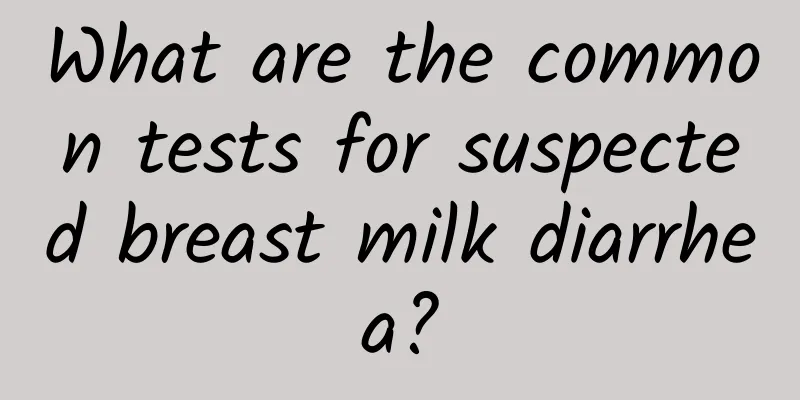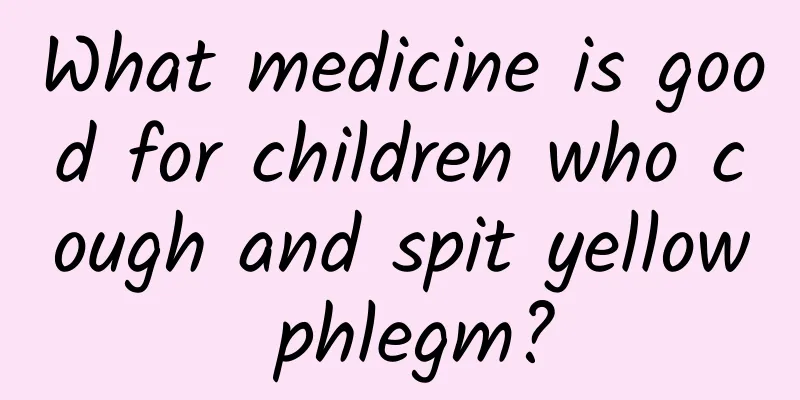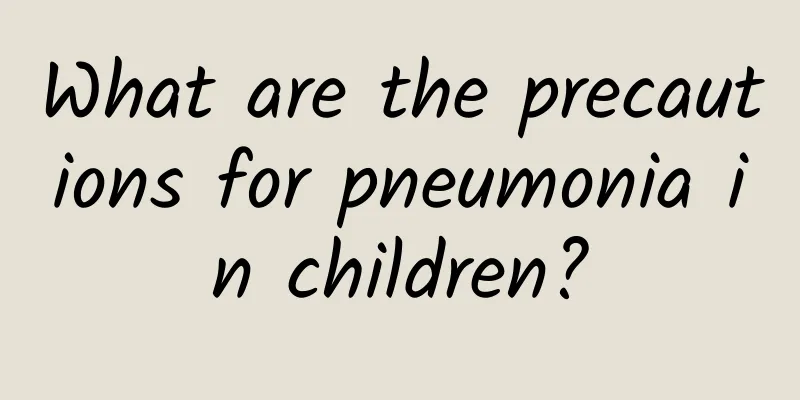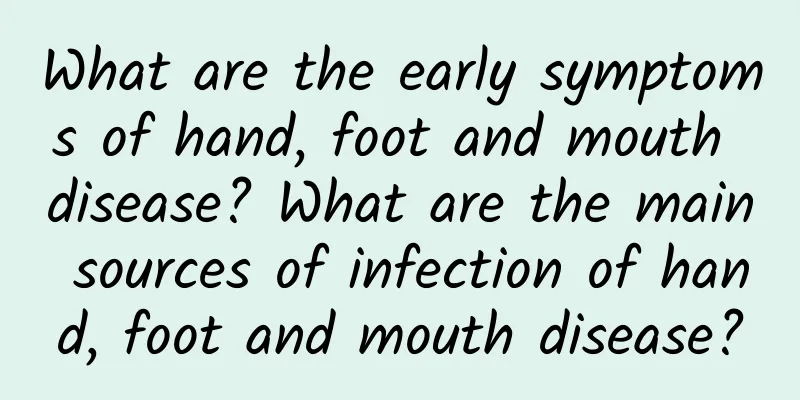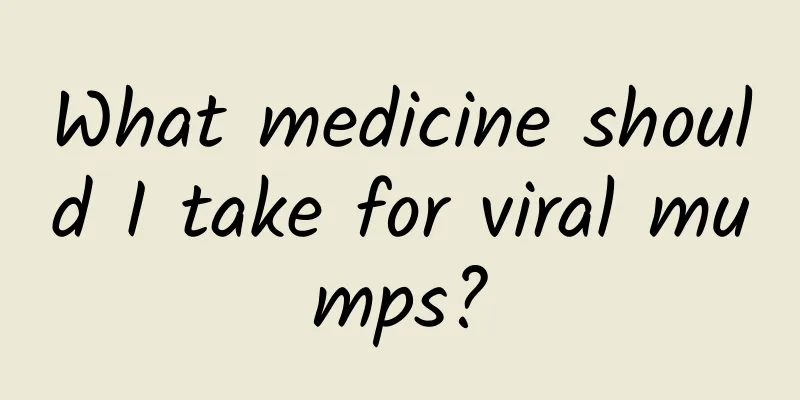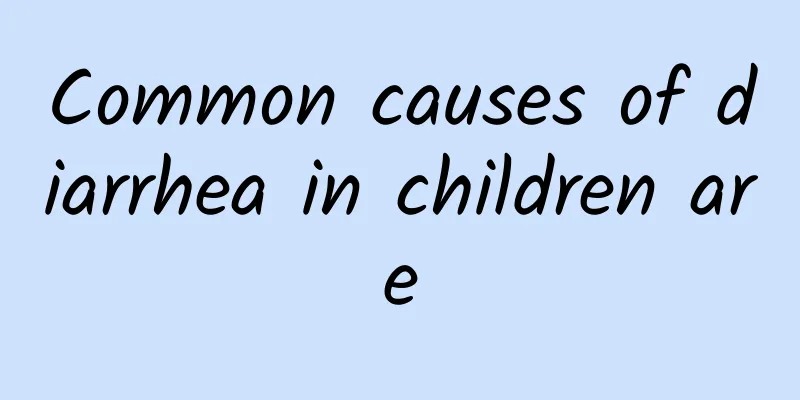What are the types of pneumonia in children? 6 ways to prevent baby pneumonia should be remembered
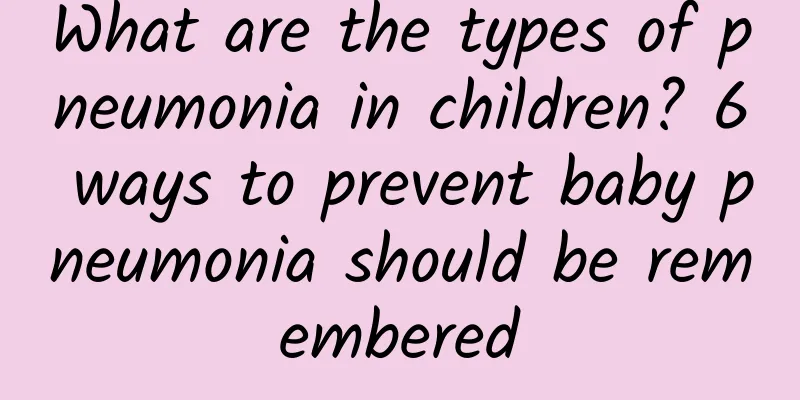
|
The healthy growth of the baby is what every parent hopes for, but due to the baby's low resistance, there are many diseases that occur, among which pneumonia is a common disease. In normal times, we must pay attention to improving the baby's physique and take reasonable prevention measures for pediatric pneumonia in many aspects. Common types of pneumonia in children 1. Bronchopneumonia: It is one of the common types of pneumonia in children, and it is common in infants under 3 years old. Children with mild pneumonia mainly have respiratory symptoms, mainly manifested as fever, cough and shortness of breath. Infants may not have fever, but have frequent coughs, rapid breathing, and three-recessed signs. Infants and young children have digestive symptoms such as loss of appetite, nausea, vomiting and diarrhea. Newborns have no obvious symptoms. Severe pneumonia will aggravate respiratory symptoms, often with systemic poisoning symptoms and clinical manifestations of involvement of the circulatory, nervous and digestive systems. 2. Adenovirus pneumonia: Pneumonia in children caused by adenovirus infection is more common in infants and young children aged 6 months to 2 years. It manifests as sudden onset of prolonged high fever, malaise and drowsiness, frequent coughing or paroxysmal coughing, wheezing, dyspnea, cyanosis, etc. Pulmonary signs appear later, often starting to appear 4-5 days after high fever, and then signs of pulmonary consolidation caused by fusion of lesions appear. A small number of children are complicated by exudative pleurisy. 3. Mycoplasma pneumonia: caused by infection with Mycoplasma pneumonia, more common in older children. Common symptoms in children are fever, which lasts for 1 to 3 weeks. Irritating dry cough is more prominent, and lung signs are often not obvious. Infants and young children develop acute onset and severe illness, with more prominent dyspnea, wheezing and lung wheezing. Some children have clinical manifestations of multiple systems throughout the body. 4. Staphylococcus aureus pneumonia: It is pneumonia caused by infection with Staphylococcus aureus, which is more common in infants under 1 year old (70%) and children with low immune function. The children are seriously ill, develop rapidly, and have obvious symptoms of poisoning, such as pale complexion, cough, groaning, and difficulty breathing. Pulmonary signs appear early, and may be combined with circulatory, nervous and digestive system dysfunction, which can easily cause complications such as empyema and pneumothorax, and have a high mortality rate. Staphylococcus aureus pneumonia that occurs in nurseries and hospitals is mostly caused by drug-resistant bacteria, and the condition is severe and difficult to control. Children with malnutrition, measles, whooping cough, adenovirus pneumonia, systemic or wasting diseases, and children with low immune function are prone to this disease and the disease is more severe. 5. Pneumococcal pneumonia: Pneumococcal pneumonia is caused by infection with Streptococcus pneumoniae and is the most common type of pneumonia in infants and young children, and is more common in spring. The onset is acute or slow, and is often accompanied by fever, cough, and dyspnea. The body temperature can be high or low, and may be accompanied by headache and irritability. The symptoms gradually worsen, and the cough is obvious. There may be wheezing, dyspnea, or cyanosis. Young infants often choke on milk and refuse to drink milk, while older children may have chills, high fever, and rust-colored sputum. The physical signs are not obvious in the early stages. In severe cases, there is rapid breathing, cyanosis around the mouth, or three-depression sign. A few have an acute onset with obvious symptoms of poisoning, which may be combined with acute heart failure, and convulsions, shock, or coma may also occur. Treatment of pneumonia and high fever in children 1. Physical cooling: When a child has a fever, physical cooling is usually used first, such as cold compresses on the head, ice pillows, etc. to dissipate heat through conduction; or 30% alcohol bath (if it is 75% alcohol, add about half of it to warm water) on the neck, armpits, groin, hands, soles of the feet, etc. for 2 to 4 minutes, and the heat will be taken away as the alcohol evaporates (note that 75% alcohol bath should not be used directly, because children have abundant capillaries on the surface of the body, which are easy to absorb. If the concentration is too high, it is easy to cause alcohol poisoning); or cold saline enema, the temperature of physiological saline is about 20℃, infants need about 100 to 300ml, and children need about 300 to 500ml, and it should be performed according to the ordinary enema method; or after boiling the juice of Chinese medicine for clearing heat and detoxification (honeysuckle, forsythia, scutellaria, bupleurum, etc.), take 30 to 60ml each time according to age, retain the enema, and do it twice a day. 2. Medication for cooling down: Use as directed by the doctor. Since infants and young children are prone to irritability or high fever convulsions after fever, the first choice is compound Lumina (also known as Alu tablets, containing aspirin and Lumina), which has both antipyretic and sedative effects. Usage: 6-month-old infants: 1/2 tablet/time; 1 year old: 1 tablet/time; 2 years old: 15 tablets/time; 3-5 years old: 2 tablets. In addition, commonly used antipyretic drugs for children include: naproxen, Anruike, Yidiqing, paracetamol and antipyretic suppositories. . Nursing of children with pneumonia 1. Open windows frequently to allow indoor air circulation and sufficient sunlight to reduce pathogenic bacteria in the air. The ultraviolet rays in the sunlight also have a bactericidal effect. However, drafts should be avoided, which is conducive to the recovery of pneumonia. 2. For high fever care, closely observe the child's body temperature, because changes in body temperature can often help determine the condition or indicate whether complications may occur. 3. Provide liquid and semi-liquid food that is high in calories, protein, vitamins, but light and easy to digest. Prevention of pneumonia in children 1. Drink water often: Parents can let their children drink more warm boiled water, of course, at the right time and in the right amount. This can not only prevent colds, but more importantly, it is beneficial to children's gastrointestinal tract and lungs. 2. Pay attention to diet: Diseases come from the mouth, especially for children who have not yet fully developed. Their body resistance is not strong enough. If the diet is unreasonable or the food is not clean, it is easy for children to get sick and cause pneumonia and other diseases. If you want to prevent pneumonia, you must also properly manage your child’s diet. 3. Stay away from the source of disease: Children have weak resistance. If they come to places with germs, they are easily invaded by these viruses and cause various diseases such as pneumonia. Therefore, parents should try their best to prevent children from contacting patients with respiratory infections. 4. Adding or removing clothes: Parents should add or remove clothes for their children in time. When the child is sweating, do not take off the clothes immediately and do not let the child suddenly go into cold air when sweating. These are what parents should pay attention to. 5. Physical exercise: Physical exercise is the best way to prevent diseases, whether it is adults or children. However, children are different from adults. Children of different ages are suitable for different exercise methods. Parents should arrange physical exercise for their children every day according to their own conditions. |
<<: Does pseudojaundice need to be treated? Use these few methods to relieve pseudojaundice
>>: Is breast milk jaundice harmful? Can I continue to breastfeed if I have breast milk jaundice?
Recommend
What is the cause of baby's dry cough?
In many cases, when babies cough, there is no phl...
What are the treatment methods for acute laryngitis in children?
Acute laryngitis in children is a common pediatri...
What causes patent ductus arteriosus in infants?
Patent ductus arteriosus in infants is caused by ...
Can acute laryngitis in children be cured?
Acute laryngitis in children is more common in wi...
There are 3 possible reasons why a two-and-a-half-year-old baby has white hair
If a two-and-a-half-year-old baby has white hair,...
What medicine should children take for runny nose? Children can use these medicines for runny nose
Children often have runny noses in daily life, bu...
ADHD affects children's learning
The occurrence of diseases such as ADHD in childr...
Drugs for treating pneumonia in children
Nowadays, pediatric pneumonia seriously torments ...
How to use the diarrhea patch for children
How to use the diarrhea patch for children? 1. Th...
Rehabilitation training for congenital poliomyelitis symptoms
After the onset of polio, the child's legs wi...
How to take care of children with pneumonia
Pneumonia is not unfamiliar in our lives, but bec...
What to do if a child has a hoarse throat and cough? What are the treatments for a child with a hoarse throat and cough?
After a child is born, his or her physical health...
Can I go to school normally if I have mumps?
Can I go to school normally if I have mumps? 1. P...
What are the causes of children's cough and fever? Can children's cough and fever be caused by pneumonia?
Children's cough and fever may be related to ...
The main symptom of acute laryngitis in children is dyspnea
One of the main symptoms of acute laryngitis in c...

